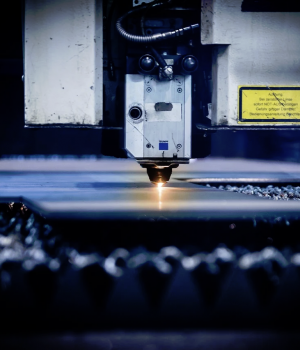Working with metal is an ancient art, and the age of mechanized manufacturing revolutionized the ways in which humanity could harness this type of material.
Of course, even with all the advances made in the last century, there are still many changes and evolutions occurring in this industry thanks to a variety of technological advancements. Here is a look at the latest innovations in the metal fabrication industry and how they will shape it going forward.
The CNC metal laser cutter is the newest addition to the current factory. It’s a wire feed and subtracts fastening CNC tool used in metal stretching and cutting operations. The key to any successful reshoring project begins by knowing what you need, then realizing where to find them at a competitive price while offering industry-leading engineering and service while meeting your demands.
Automated equipment is becoming the norm
There are two issues with using fabrication equipment that involves a lot of manual input from workers; it is dangerous for those who have to get up close and personal with heavy machinery, as well as being imperfect from an efficiency perspective because of the potential for operator error and the physical limitations of the human body.
Luckily the rise of automation at every stage of the fabrication process, from the initial design to the finished product, is solving both problems in one fell swoop. It has got to the point that even a used fabrication machinery dealer can supply highly automated equipment including CNC mills, lathes, and presses that can manage large production tasks without needing to be constantly engaged with by employees.
Laser-powered fabrication machinery has also had a major impact both in terms of process automation and when it comes to equipment reliability, durability, and cost-effectiveness. Because there is no direct contact between the cutting mechanism and the metal itself, wear and tear are minimal and maintenance is thus less of a concern. These machines are also more versatile than single-use setups of the past, meaning that a laser-based solution can handle everything from cutting and engraving to ablation and marking, all without the need to change tooling in between.
Additive manufacturing is changing the game
Most people still see 3D printing as something which is suitable for small-scale rapid prototyping and domestic tinkering, but its applications in a metal fabrication context are becoming increasingly potent as the underlying technology improves.
There are lots of reasons to embrace additive manufacturing as a means of making parts, components, and even entire products out of metal and other compatible materials. It can deliver far less waste than traditional fabrication methods, for example, which in turn leads to lower costs for manufacturers and their customers. It can also overcome geographic boundaries by allowing designs to be shared worldwide, effectively decentralizing the production of spare parts and making it easier for them to be accessed in remote regions, again thanks to the automation that this process relies upon.
Other materials are creating competition
For many decades, both the availability and the malleability of metal using the established techniques and technologies meant that it was the de facto choice in a whole range of scenarios, from manufacturing to construction and beyond.
Today, the rise of new technologies has made the market far more competitive and created viable uses of other materials in contexts where metals like steel might previously have been at the top of the list.
From products made using silicon and glass to items made from biological substances and advanced plastics, designers have more choice than ever before. This in turn has meant that metal fabrication companies have had to up their game and invest in their own innovative technologies so as not to get left behind.
Healthy competition and the glut of technological advancements have gone hand in hand to make this industry more buoyant and exciting than ever, and this state of affairs looks set to continue.
Table of Contents


![10.16.1oo.244 FTP Server Guide [Updated 2024] 10.16.1oo.244](https://www.techiemag.net/wp-content/uploads/2021/09/10.16.1oo.244-238x178.png)
![Modern app LTD app [Updated 2023] Modern app LTD app 2021](https://www.techiemag.net/wp-content/uploads/2021/08/shutterstock_copd1-1168x657-1-238x178.jpg)
![172.16.50.4 Movie Server IP Address [2023] 172.16.50.4 / 172.16.50.04 / 172.16.50.o4](https://www.techiemag.net/wp-content/uploads/2021/09/172.16.50.4-techiemag-238x178.png)
![[Jan 2024] EZTV Proxy | Unblock EZTV | EZTV Alternatives eztv](https://www.techiemag.net/wp-content/uploads/2020/05/eztv-300x194.png)
![How To Download JW Player Videos ? [2021] How To Download JW Player Videos ?](https://www.techiemag.net/wp-content/uploads/2021/04/3982005_video-player-jw-player-logo-png-hd-png-100x75.jpg)

